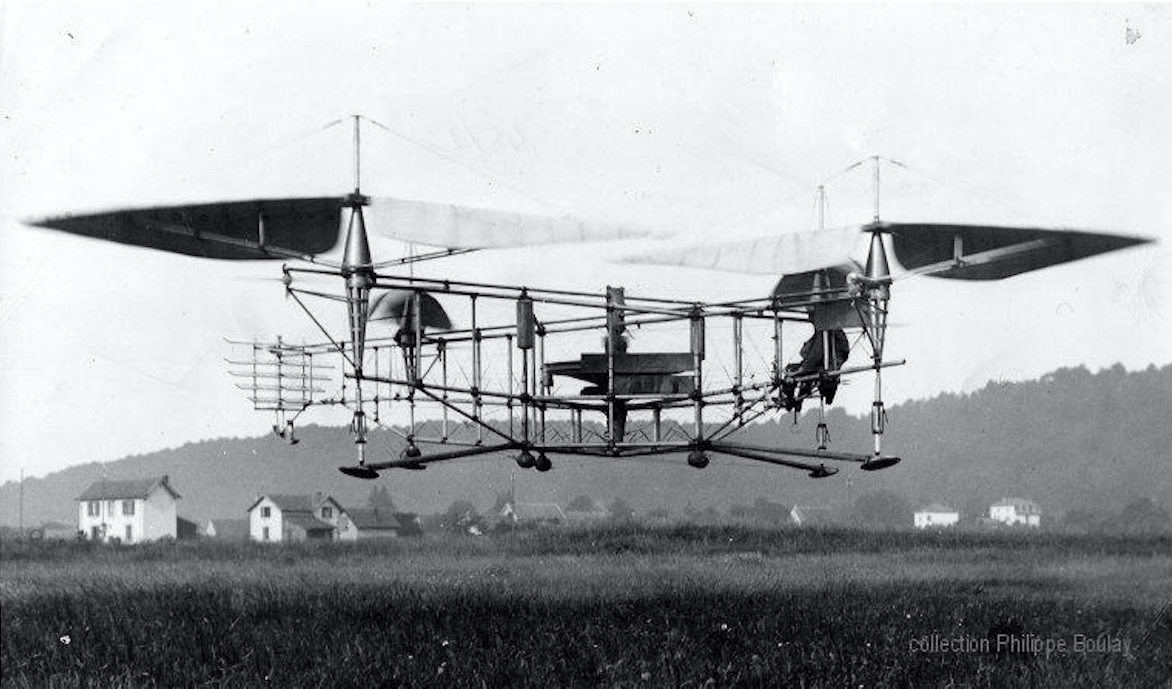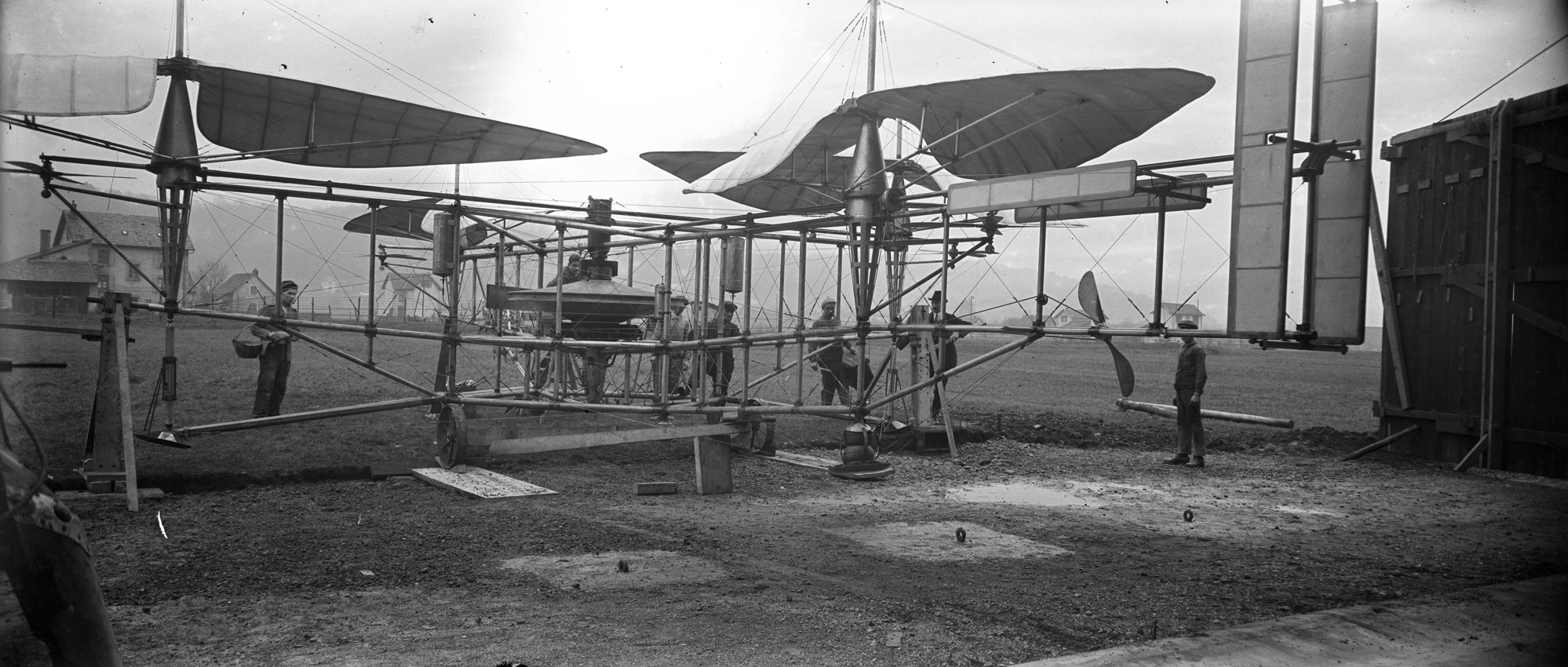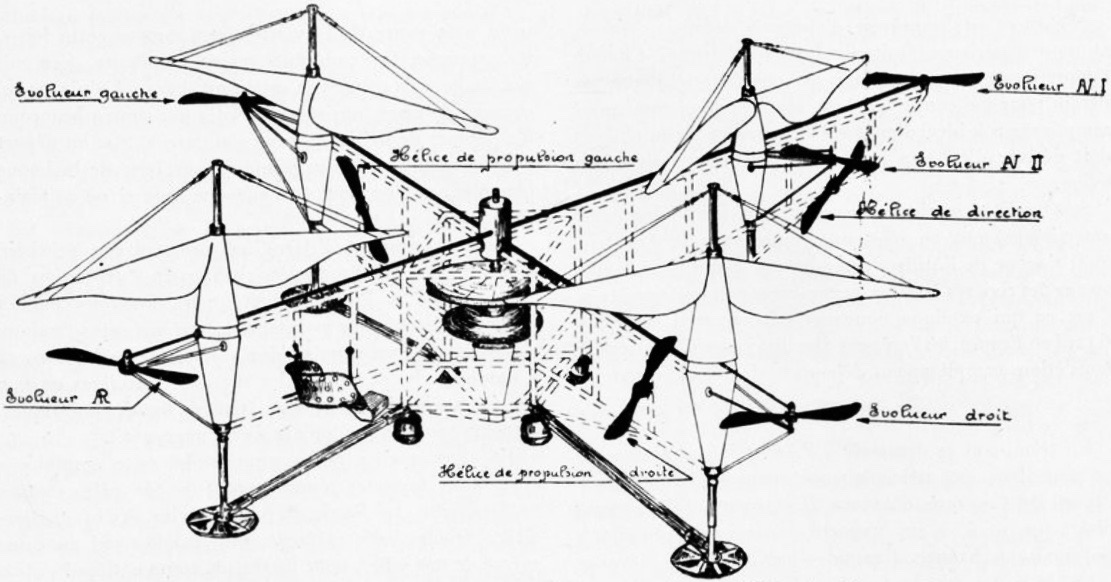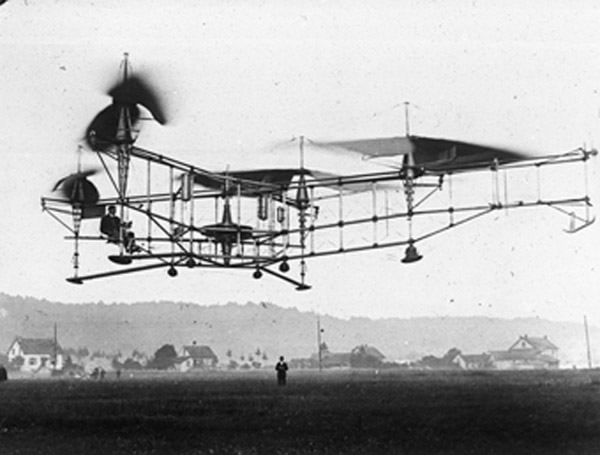
 4 May 1924: At 7:30 a.m., Étienne Edmond Oehmichen (1884–1955), an engineer for Société Anonyme des Automobiles et Cycles Peugeot, flew his four-rotor L’Hélicoptère Nº2 around a triangular closed circuit of approximately 1 kilometer (0.62 mile) at Valentigney, France. The flight took 7 minutes, 40 seconds. It was observed by the public, members of the press and officials of the Service Technique de l’ Aéronautique (S.T.Aé, the French air ministry). For his accomplishment, Oehmichen was awarded a prize of ₣90,000 by the government of France.
4 May 1924: At 7:30 a.m., Étienne Edmond Oehmichen (1884–1955), an engineer for Société Anonyme des Automobiles et Cycles Peugeot, flew his four-rotor L’Hélicoptère Nº2 around a triangular closed circuit of approximately 1 kilometer (0.62 mile) at Valentigney, France. The flight took 7 minutes, 40 seconds. It was observed by the public, members of the press and officials of the Service Technique de l’ Aéronautique (S.T.Aé, the French air ministry). For his accomplishment, Oehmichen was awarded a prize of ₣90,000 by the government of France.
FLIGHT reported:
A Fresh Helicopter Record
M. Oemichen has been continuing his experiments at Valentigny with his helicopter, and on Sunday, May 4, established a record for helicopters by accomplished a flight of more than one kilometre—1,100 yards—in a closed circuit. The flight lasted 7 mins. 40 secs. and during most of the time the machine maintained a height of about 3 feet, but sometimes rose to 10 feet. The flight was officially observed by a representative of the Department of Military Aeronautics. By this performance M. Oemichen wins an award of 90,000 francs given by the French Government.
FLIGHT, The Aircraft Engineer & Airships, No. 802 (No. 19, Vol. XVI.) May 8, 1924, Page 267, Column 1

The previous month, Oehmichen had set two FAI world rotorcraft records for distance in a straight line. On 14 April 1924, he flew 360 meters (1,181 feet)¹, and on 17 April, 525 meters (1,722 feet).²
On 14 September 1924, he would set two records for altitude, 1 meter (3.28 feet) with a 100 kilogram (220 pounds) and a 200 kilogram (441 pounds) payload.³

Oehmichen’s helicopter (also referred to by some sources as the Peugeot Nº2) was a cross-shaped structure built of metal tubing. Lift was generated by four two-bladed, counter-rotating, main rotors. Two rotors had a diameter of 6.5 meters (21 feet, 4 inches), and the other two, 7.5 meters (24 feet, 7 inches). They all turned at 145 r.p.m. Blade pitch was controlled by warping.
The helicopter had another five rotors positioned in the horizontal plane. Three had a diameter of 1.45 meters (4 feet, 9 inches), and two, 1.55 meters (5 feet, 1 inch). These had reversible pitch were used to provide lateral control. Two variable-pitch pusher propellers with a diameter of 1.40 meters (4 feet, 7 inches) were positioned on each side of the lateral structure, and were driven by belts. The helicopter was steered by another small rotor at the front.

With the helicopter having an operating weight of approximately 1,000 kilograms (2,205 pounds), the rotors had a load factor of 33 kilograms per square meter (6.8 pounds per square foot).
 L’hélicoptère Nº2 was powered by a single Société des Moteurs Gnome et Rhône Type R nine-cylinder rotary engine placed vertically near the center of the structure.
L’hélicoptère Nº2 was powered by a single Société des Moteurs Gnome et Rhône Type R nine-cylinder rotary engine placed vertically near the center of the structure.
The Le Rhône Type R, introduced in 1917, was an air-cooled, normally-aspirated, 15.892 liter (969.786 cubic inches) nine-cylinder overhead valve rotary engine with two valves per cylinder. The Type R produced 170 cheval vapeur (167.7 horsepower) at 1,360 r.p.m. The engine was 0.990 meters (3 feet, 2.9 inches) long, 0.995 meters (3 feet, 3.2 inches) in diameter, and weighed 166 kilograms (366 pounds).

¹ FAI Record File Number 13093
² FAI Record File Number 13095
³ FAI Record Files 13091 (100 kilograms) and 13092 (200 kilograms)
© 2019, Bryan R. Swopes